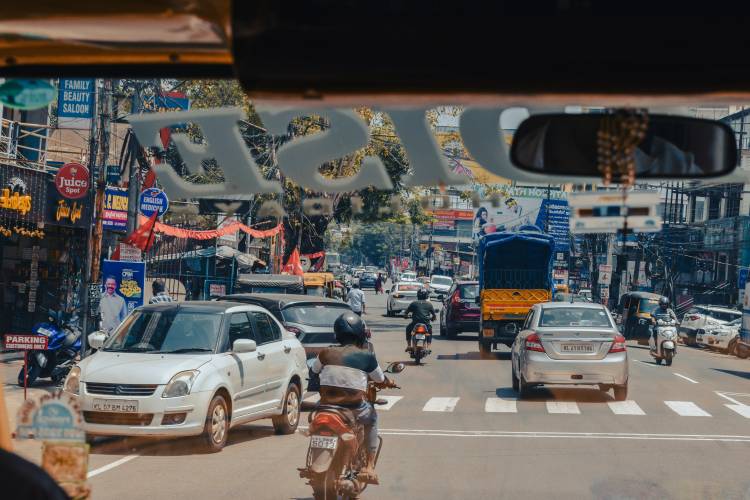
The government is expecting higher-than-expected tax revenues for FY25 even as the middle class struggles with rising inflation. The government is optimistic about beating its ambitious Rs 22 trillion gross direct tax collection target, thanks to the upbeat tax collection trends. This raises crucial questions: is the government’s focus on tax collection deepening the financial strain on the already burdened middle class; and will heavy-handed taxation further reduce the purchasing power of the citizens?
An article published by Policy Circle earlier this week had highlighted several indicators signalling a slowing economy, including declining demand for FMCG, automobile, and consumer goods. While macroeconomic indicators point to challenging times, celebrating increased government revenues may be seen as an act of self-deception. The middle class, already struggling, showed tepid spending during the recent festive season. Additionally, India’s retail inflation remains above the RBI’s target range, with the price spikes in essential items like vegetables and edible oils hitting household budgets. In this context, increasing the tax burden risks further eroding purchasing power.
READ | Capex reboot: Spending caps to go despite fiscal headwinds
Why are tax collections rising?
Government officials cite strong collections and hope to exceed the target. As of November 10, FY25, gross direct tax collections had risen by 21.2% to Rs 15.02 trillion, surpassing the budgeted 12.8% growth rate. However, due to a 53.1% surge in refunds, net collections grew by 15.41% to Rs 12.1 trillion, according to government data.
Despite concerns of heavy tax burden on individuals, the government argues that this is not the case. Recent data uses non-corporate tax instead of personal income tax, as it includes contributions from individuals, Hindu Undivided Families, firms, associations, local authorities, and artificial judicial persons. This categorisation is meant to counter the idea that individual taxpayers are shouldering a disproportionate tax load. The government also claims substantial tax relief for those earning below Rs 20 lakh, who form much of the middle class.
Officials attribute rising collections to better tax law enforcement and anti-black money measures. Over the last decade, the number of taxpayers earning more than Rs 50 lakh annually has nearly quintupled, with this group contributing 76% of total income tax collections.
Middle class paying more than a fair share
The Union government’s revenue from direct taxes reached a 24-year high in 2024, with the direct tax-to-GDP ratio hitting 6.64% in FY23-24. While this suggests better tax compliance and a growing tax base, it also raises concerns that the government may be overtaxing its citizens, especially as personal income tax collections have quadrupled from Rs 2.66 lakh crore in FY15 to Rs 10.45 lakh crore in FY24.
The middle class, which comprises only around 2% of the population, is contributing a disproportionate share of taxes, more than many large corporations. Experts warn that this reliance on a small taxpayer base is unsustainable. However, the government maintains that only 1.6% of the population is effectively overtaxed, downplaying the impact on the middle class.
High tax rates, both direct and indirect, are steadily eroding the quality of life for middle-class and poorer households, forcing lifestyle adjustments that affect everything from nutrition to education. With rising income taxes and GST, these households are left with less disposable income, limiting their ability to save, invest, or even spend on basic comforts. For many, this means cutting back on essentials, delaying healthcare, reducing educational investments for children, and forgoing leisure activities entirely. This downward adjustment in lifestyle not only dampens consumer confidence but also risks deepening economic inequality, as these groups are left further behind in pursuing upward mobility.
The Goods and Services Tax has compounded financial pressures on poorer sections and the lower middle class, who now face higher costs for everyday essentials due to increased indirect taxes. While GST was intended to simplify tax collection and broaden the tax base, its impact on low-income households has been disproportionate. Essential items such as processed foods, healthcare, and even hygiene products are now subject to GST, which reduces disposable incomes for those already struggling to make ends meet. The regressive nature of indirect taxes means that low-income households, which spend a larger share of their income on necessities, feel the effects of GST more acutely than higher-income groups.
Economic impact of high tax revenues
An excessive focus on tax collection from individuals can have adverse effects on the economy. For India, it could dampen economic activity by reducing disposable incomes and, in turn, consumption, thus impacting long-term growth. Indirect taxes like VAT, which increase the cost of goods, can further curtail consumer spending.
Instead of relying heavily on the middle class, the government could explore other avenues for revenue, particularly corporates. Despite reporting higher profits, corporate tax contributions have declined as a percentage of total receipts. In 2019, the government’s decision to slash corporate tax rates led to an annual revenue loss of Rs 1.44 lakh crore, even as corporate profits quadrupled between FY20 and FY23, according to the Economic Survey.
India’s tax system has sparked much debate, with many arguing that a comprehensive overhaul is overdue. The government needs to strike a balance in its approach, taxing both individuals and highly profitable corporations more equitably.
Those struggling to make ends meet face a double taxation burden, paying income tax and then taxes on spending, while corporations are taxed only on profits after expenses. Continuing to increase the tax load on individuals limits the government’s ability to stimulate the economy by increasing the disposable incomes of those who need it most. New ways must be devised to ensure the middle class retains more of its earnings to spur growth and strengthen economic resilience.
